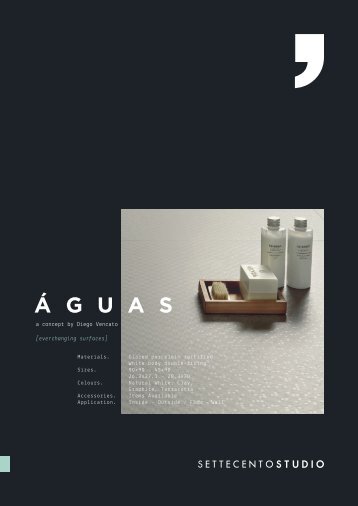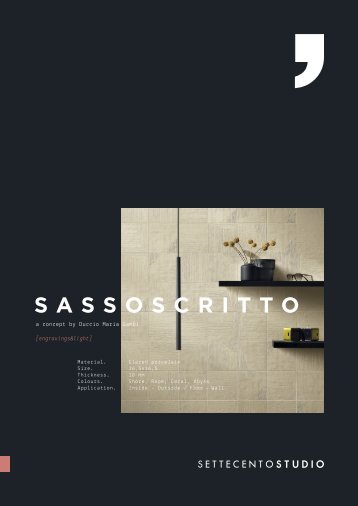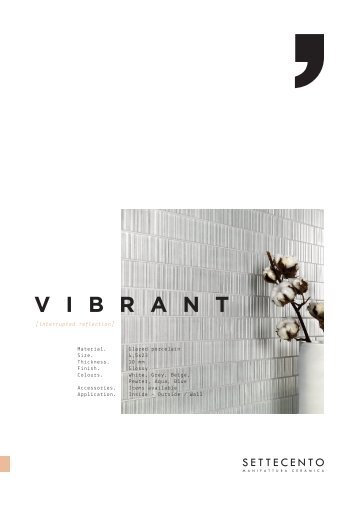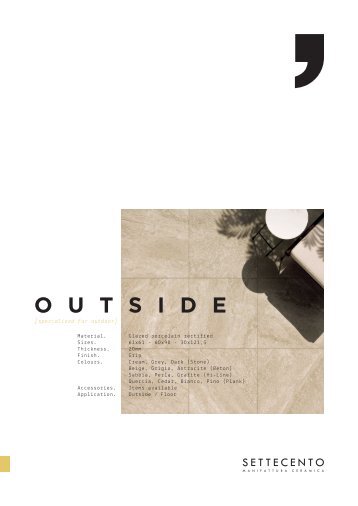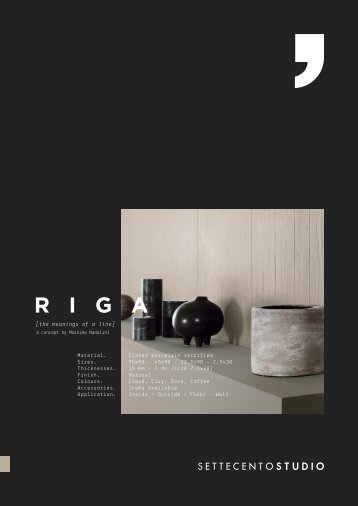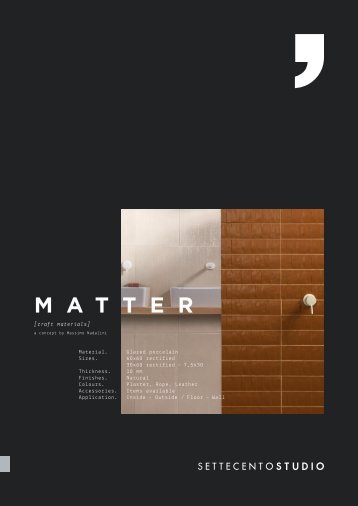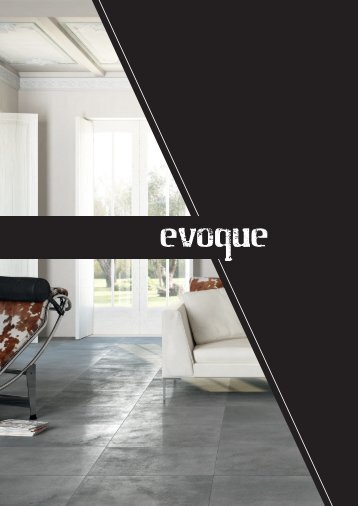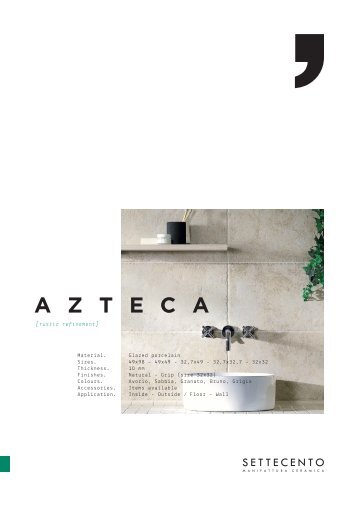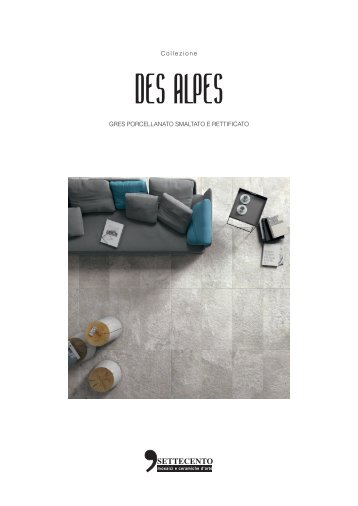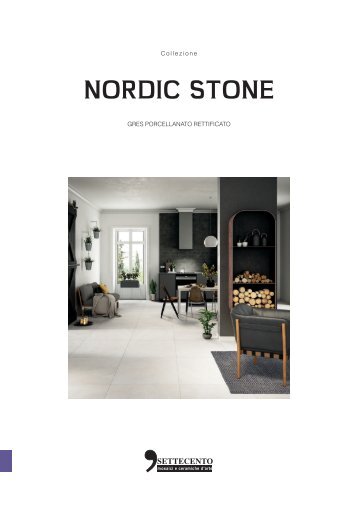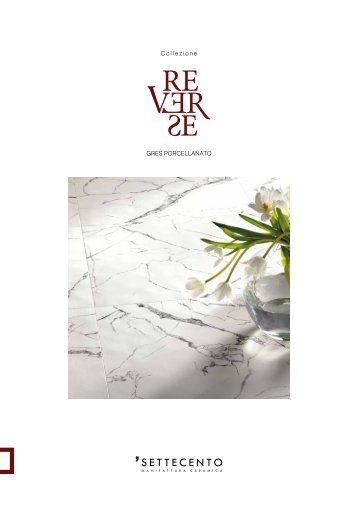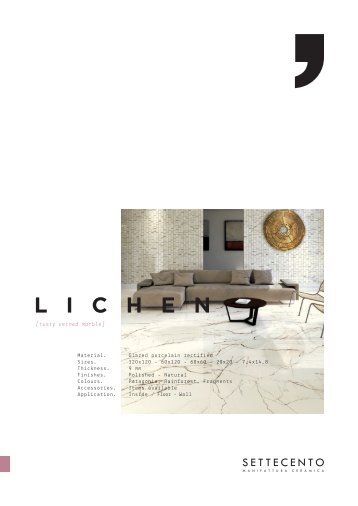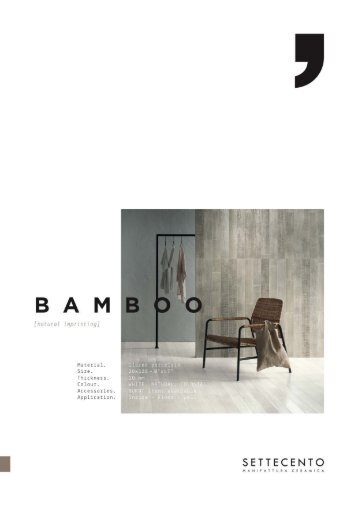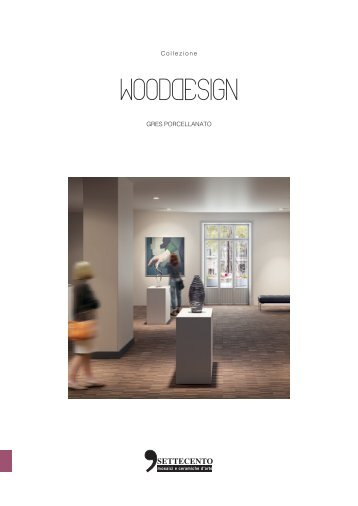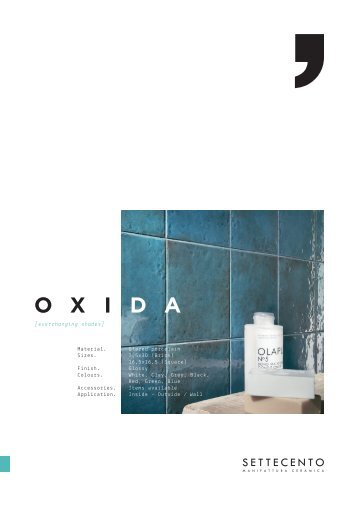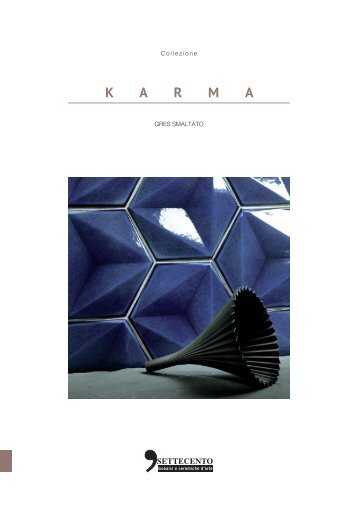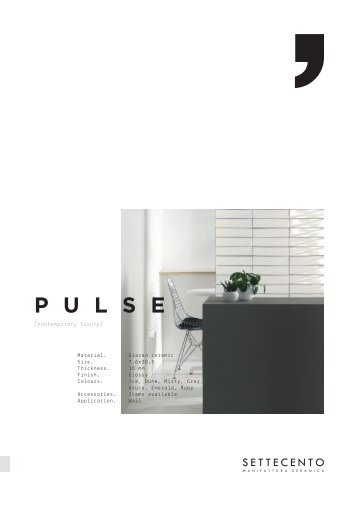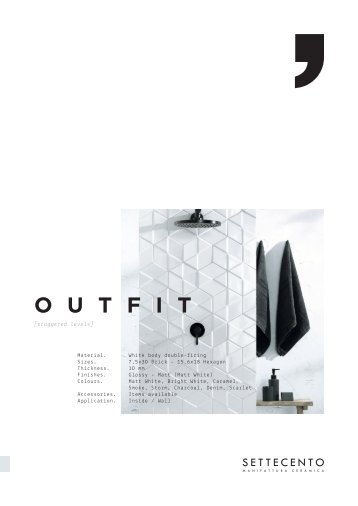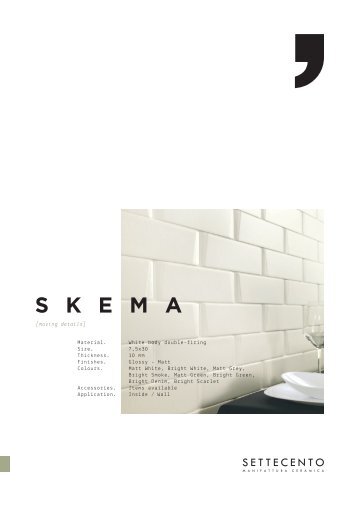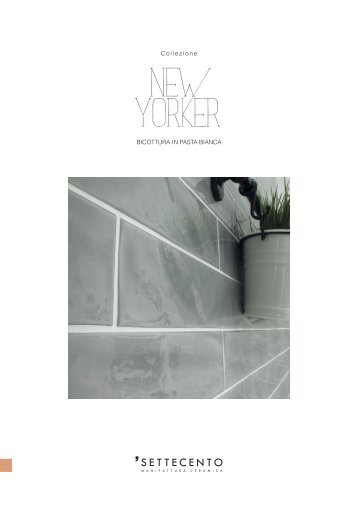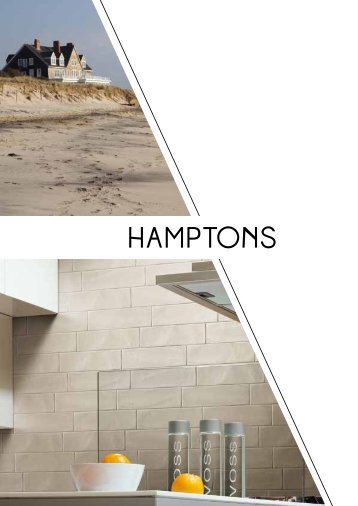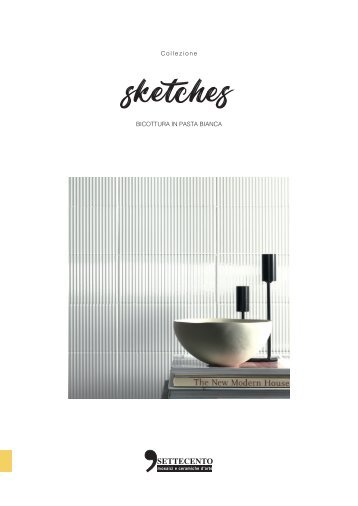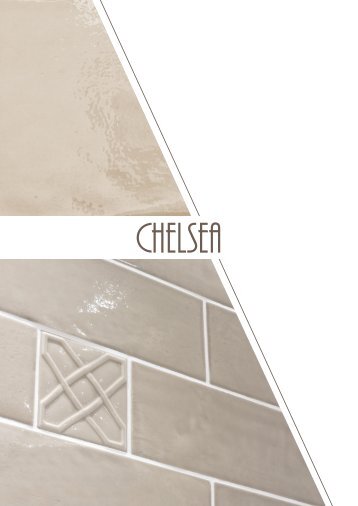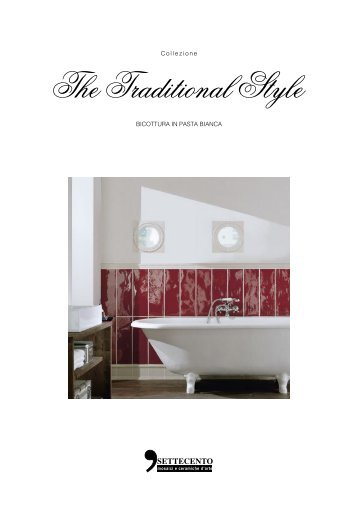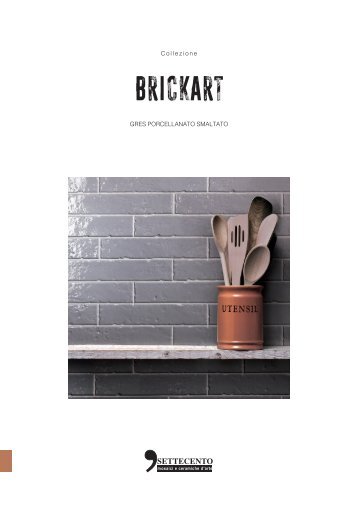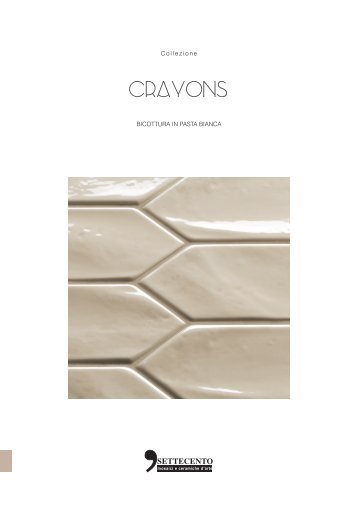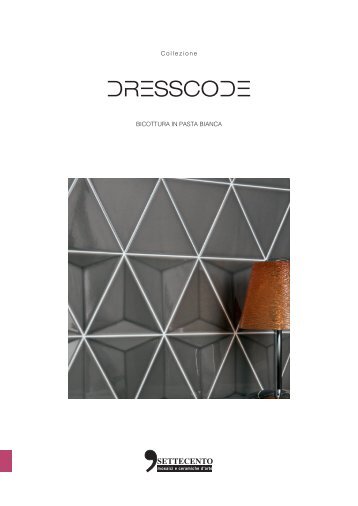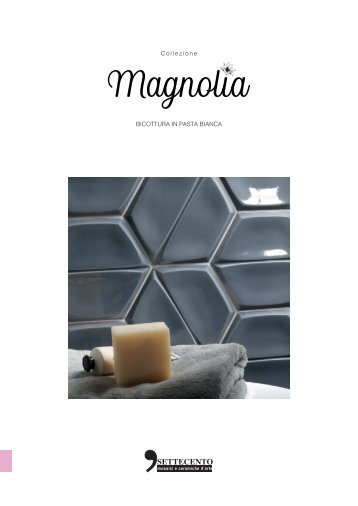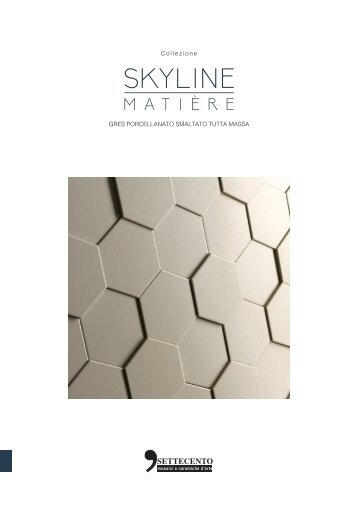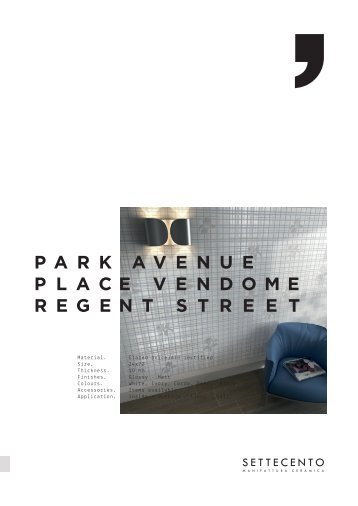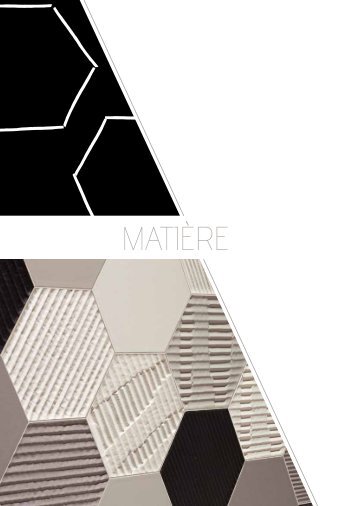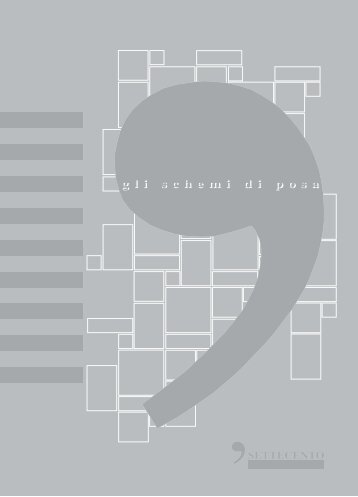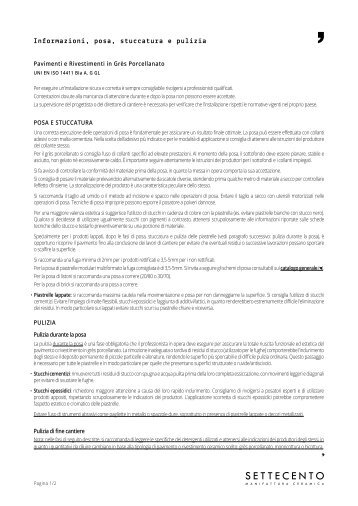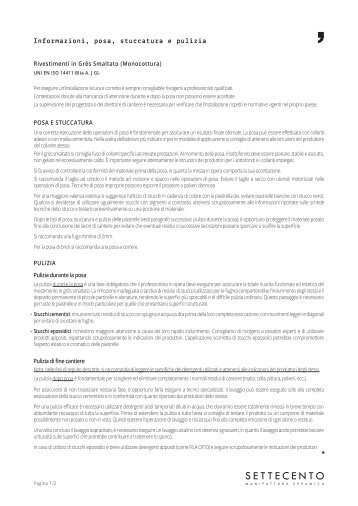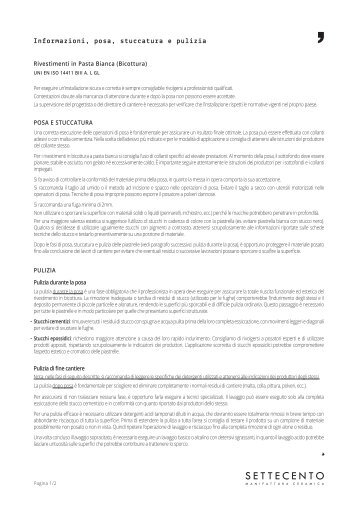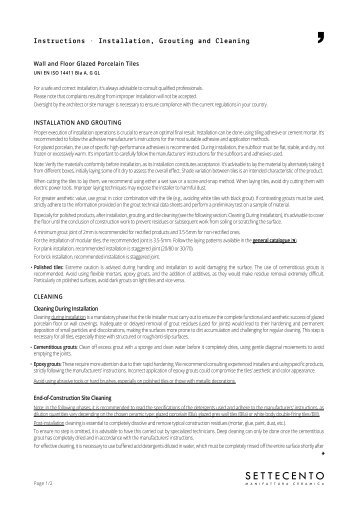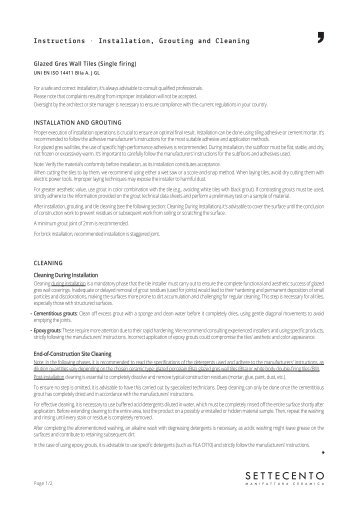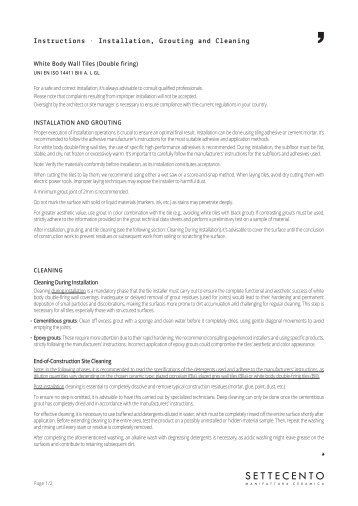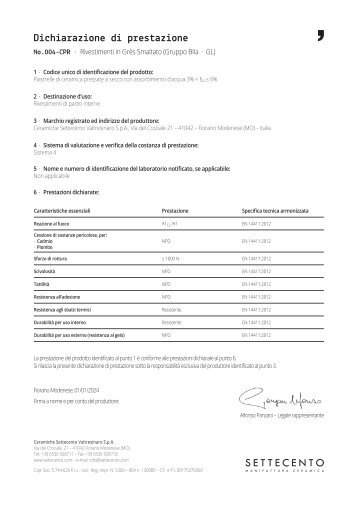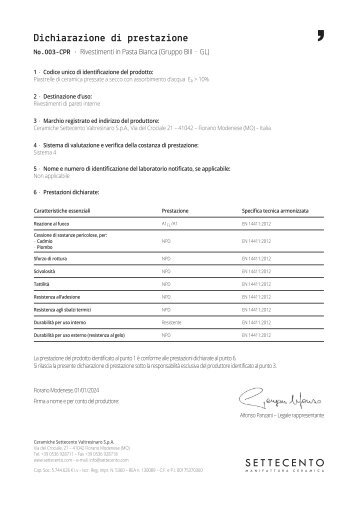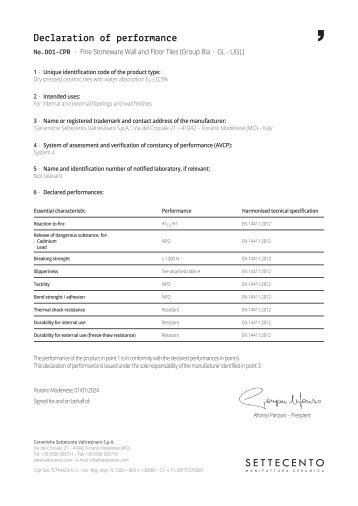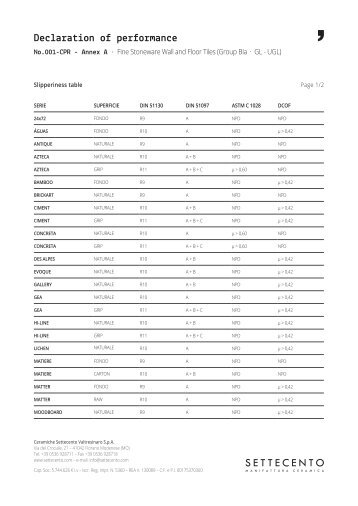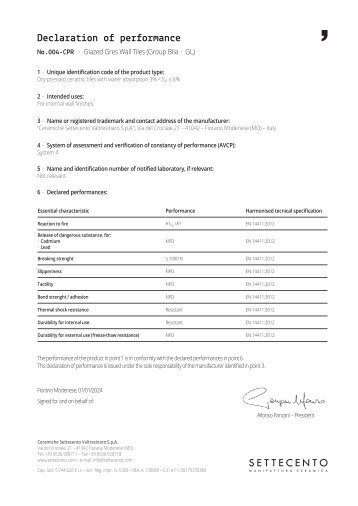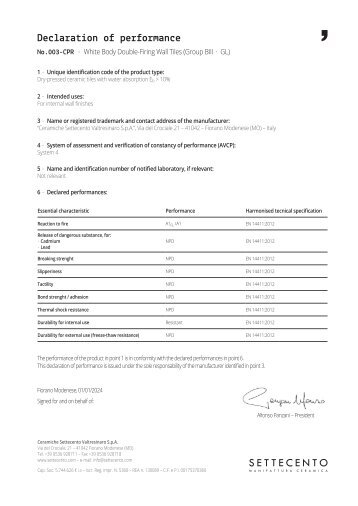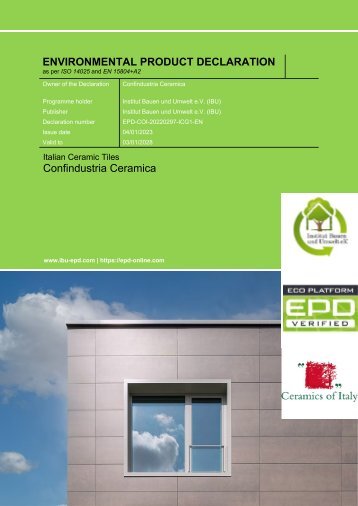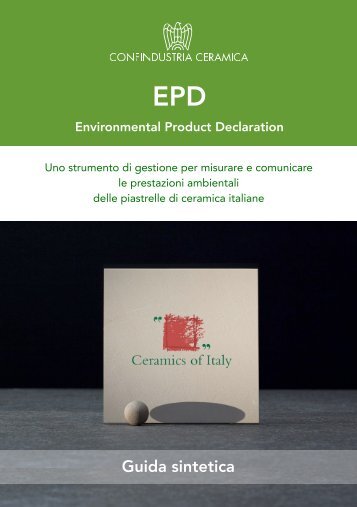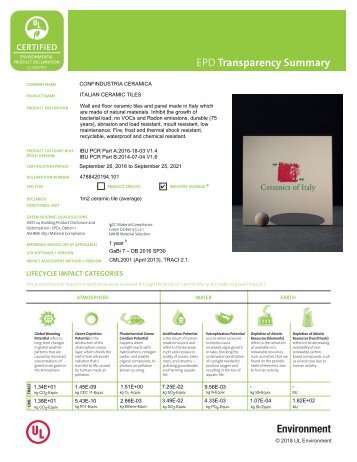EPD - Settecento
The firing phase takes
The firing phase takes place at different temperatures (depending on the ceramic tile produced, between 1000° C and 1300° C ) in order to achieve the typical ceramic tile features of abrasion, water and chemicals resistance and durability. Before selection and packing lines, rectified products are cut and squared at the desired size. The final product is packed in cardboard boxes, stacked on wooden pallets and protected with PET film. The tiles are stored in a warehouse until the order preparation for customer shipment. The monitoring of the production performances is implemented mainly by the quality management system (QMS) and process certification in compliance with: ISO 9001 - ISO 50001 - ISO 14001 - EMAS - OHSAS 18001 2.7 Environment and health during manufacturing Workers are informed about physical and chemical risks associated to their job and workplace. They receive an appropriate training and personal protective equipment. Confindustria Ceramica promoted the adoption of health and safety practices agreed with Trade Unions and HSE local authorities. Furthermore Confindustria Ceramica implemented the Social Dialogue agreement (NEPSI) followed by member companies. Confindustria Ceramica also promoted the adoption of studies and guidelines on environmental management to monitor and increase companies' performances. Water/soil: Contamination of water and soil does not occur. Italian ceramic tile companies recycle the total amount of waste water during the drying process in form of steam or release it into the internal waste water treatment and re-use it internally or externally. Air: For energy production purposes only natural gas is burned. Emissions from the combustion process are under strict limits and monitored. Environmental protection measures are employed. A broad number of companies use self-produced electricity via cogeneration and solar panels. 2.8 Product processing/Installation Tiles are fixed to the walls and floor surfaces using different materials and amounts, for example, dispersion and cementitious adhesives and mortars, sealants or liquid-applied membranes. During the installation, no emissions occur and no health or environmental risks derive from ceramic tile installations. 2.9 Packaging The tiles are packed in cardboard boxes, wrapped with polyethylene film and plastic straps and stacked on wooden pallets. The amount of packaging material can vary according to the tile size. The packaging end of life phase includes (according to Eurostat 2019): · Paper: recycling, energy recovery, disposal; · Plastic: recycling, energy recovery, disposal; · Wood: reuse, energy recovery, landfill. 2.10 Condition of use Ceramic tiles are solid and inert due to being burnt at high temperatures. The environmental impacts generated during the B1 phase are very low and therefore can be neglected. 2.11 Environment and health during use Ceramic is intrinsically inert, chemically stable and therefore, during the use stage, does not emit any pollutants or substances which are harmful to the environment and health such as: Volatile Organic Compounds (VOCs) and Radon. 2.12 Reference service life The service life of tiles is generally higher than 50 years BNB 2011. According also to US GBC the service life of tiles could be as long as the life of the building itself. Therefore 60 years can be an alternative tile's life for U.S. GBC. The results reported consider the tile’s use of 1 year, therefore multiplying B2 values for 50 or 60, it's possible to obtain B2 values referred to 50 or 60 years. A reference life according to ISO 15686 is not reported. 2.13 Extraordinary effects Fire According to EN 13501-1:2007+A1:2009, ceramic tiles can be classified as A1 class of fire reactions rating, because they do not contribute to fire. Fire protection Name Value Building material class A1 Burning droplets - Smoke gas development - Water Ceramic tiles cannot react with water because they are water-insoluble. Mechanical destruction Ceramic tiles can be smashed mechanically, but no harmful damage to the environment is expected. 2.14 Re-use phase After the demolition and deconstruction stage, ceramic tiles can be crushed and then used in a range of different applications, like concrete aggregates or road construction. 2.15 Disposal According to the European Waste Catalogue (EWC) ceramic tiles waste belongs to group 17 “Construction and demolition wastes”, tiles and ceramic (code:17 01 03). 2.16 Further information More information can be found at: www.confindustriaceramica.it www.ceramica.info 3. LCA: Calculation rules 4 Environmental Product Declaration Confindustria Ceramica – Italian Ceramic Tiles
3.1 Declared Unit The declared unit is 1 m 2 of installed ceramic tiles for covering walls and floors with an average mass of 21.38 kg and thickness of 1cm. Declared unit Name Value Unit Declared unit 1 m 2 Grammage 21.38 kg/m 2 The product classes that were considered for the study are: - Single-fire - Double-fired - Porcelain stoneware - Rustic terracotta - Other: Klinker, white body, red stoneware, mosaic and other special pieces Of these, the type most frequently produced by Confindustria Ceramica member companies is porcelain stoneware. The data sample used to create the model is representative of the group of associated companies of Confindustria Ceramica (over 85%) and of the Italian situation in the above-mentioned sector, since the associated companies have an annual production that covers the 82.6 % of Italian ceramic tile production. Furthermore, the data used to determine the environmental impacts associated with the production of 1 m 2 of average tile have a high robustness due to the large number of companies participating in the study, the high representativeness of the primary data considered and the datasets selected. 3.2 System boundary The entire life cycle of the product is considered (Type of EPD: cradle to grave and module D (A + B + C + D) and the modules described below are declared in this EPD. Modules A1-A3 include those processes that provide energy and material input for the system (A1), transport up to the factory gate of the plant (A2), manufacturing processes as well as waste processing (A3). Module A4 includes the transport from the production site to the customer or to the point of installation of the tiles (IT: 17.8 % - EU: 54.7 % - WW: 27.5 %). Module A5 considers all tile installation steps (like adhesives consumption) also packaging waste processing (recycling, incineration, disposal). Credits from energy substitution are declared in module D. During this phase a ceramic material loss of 6,5% has been considered. Module B1 considers the use of tiles. During the use of ceramic tiles, no hazardous indoor emissions are expected to occur. Module B2 includes the cleaning of the tiles. Provision of water and cleaning agent for the cleaning of the tiles, incl. waste water treatment are considered. Modules B3-B4-B5 are related to the repair replacement and refurbishment of the tiles. If the tiles are properly installed no repair, replacement or refurbishment processes are necessary. Modules B6-B7 consider energy use for operating building-integrated technical systems (B6) and operational water use for technical building-related systems. No operational energy or water use are considered. Cleaning water is declared under B2. Module C1 regards the demolition and de-construction process of the tiles from the building. Module C2 considers the transportation of discarded tiles to a recycling or disposal process. Module C3 considers every process (collection, crushing process etc.) for recycling the tiles. Module C4 includes all the landfill disposal processes, including pre-treatment and management of the disposal site. Module D includes benefits from all net flows in the end-of-life stage that leave the product boundary system after having passed the end-of-waste stage. Loads from packaging incineration and resulting energy credits (electricity and thermal energy) are declared within module D. 3.3 Estimates and assumptions The modules from A5 to C4 are scenarios based on average data included in the PCR created by the European Ceramic Tile Manufacturers' Federation CET PCR 2014. For those materials, (glaze compost, colourant, and chemical additives) where no primary data were available and an exact chemical composition (coming from a datasheet) was unknown an average composition was used, and assumptions were taken based on common chemicals criteria. 3.4 Cut-off criteria All known inputs and outputs were considered. 3.5 Background data Background data for the Life Cycle Modelling have been taken from the last version Gabi 10 professional database (updated to 2022.2, year 2022). Other sources for background data used are ELCD/FEFCO, Perry's Chemical Engineers' Handbook, Ceramic Glaze Handbook/, European Ceramic Tile Manufacturers' Federation. 3.6 Data quality The background data sets used are less than 4 years old. Most information (energy and water consumption, pollutant emissions powder atomized and ceramic production) are measured or directly calculated at company level and declared in the Italian IPPC document called AIA, that is specific and verified for each plant involved in this study. Emissions of carbon dioxide (connected to carbonate’s oxidation) are collected using ETS (Emission Trading System) declaration. Primary data collected with specific company data collection during the previous project (for atomization and glaze production) were considered still valid for the current situation. The overall data quality can be considered good. 3.7 Period under review The primary data collected in the study refer to 2020. 5 Environmental Product Declaration Confindustria Ceramica – Italian Ceramic Tiles
- Page 1 and 2: ENVIRONMENTAL PRODUCT DECLARATION a
- Page 3: Ceramic tiles with the lowest water
- Page 7 and 8: C1: This module considers the use o
- Page 9 and 10: RESULTS OF THE LCA - INDICATORS TO
- Page 11 and 12: UNI EN ISO 10545-3:2018, Ceramic ti
- Page 13 and 14: LA FABBRICA SPA LAMINAM SPA MARAZZI
Inappropriate
Loading...
Mail this publication
Loading...
Embed
Loading...

